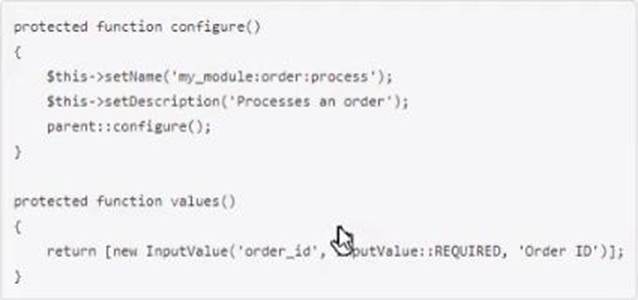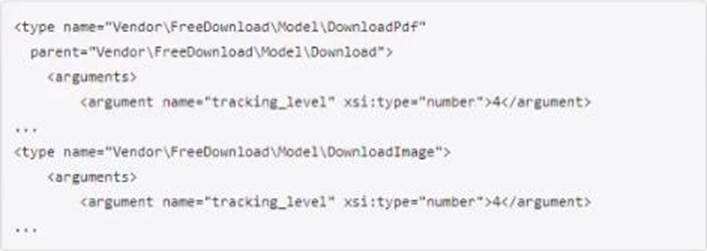Adobe AD0-E709 Adobe Commerce Developer Expert Online Training
Adobe AD0-E709 Online Training
The questions for AD0-E709 were last updated at Dec 19,2025.
- Exam Code: AD0-E709
- Exam Name: Adobe Commerce Developer Expert
- Certification Provider: Adobe
- Latest update: Dec 19,2025
CORRECT TEXT
An Adobe Commerce developer wants to generate a list of products using ProductRepositoryinterface and search for products using a supplier_id filter for data that is stored in a standalone table (It. not in an EAV attribute).
Keeping maintainability in mind, how can the developer add the supplier ID to the search?
- A . Add a custom filter to the virtual type
- B . MegentoCatalogmodelApiSearchCriteriaCollectionProfessorProductFilterProcessor for supplier_id field. In the custom filter, apply the needed join and filter to the passed $collection.
- C . Write a before plugin on MagentoCotalogModelProductRepository: getlist()and register the search criteria passed. Write an event observer to listen for the event catalog_product_collection_load_before – Iterate through the registered search criteria, and if found, apply the neededjoin and filter to the event’s $collection .
- D . Write a before plugin on MagentoFremeworkapiSearchCriteriaCollectionProcessorinterface::process() . Iterate through the $searchCriteria provided for supplier_id, and if found, apply the neededjoin and filler to the passed $collection .
An Adobe Commerce developer has created a process that exports a given order to some external accounting system. Launching this process using the Magento CLI with the command php bin/tagento "/.module:order:process –oruer_id-<order_id> is required. Example: php bin/magento ny_module:order:proeess –order_id=1245.
What is the correct way to configure the command?
A)

B)

C)

- A . Option
- B . Option
- C . Option
An Adobe Commerce developer is asked to implement a 15% surcharge for all users from a Wholesale’ customer group.
Keeping best practices in mind, what is a correct way to accomplish this?
- A . Create a Cart Price Rule that applies only to the "Wholesale’ group. Specify no conditions for the rule, and in the Actions section, specify for the rule to apply a "Percent of product price discount", with the Discount Amount’ field set to -15 .
- B . Create an Observer to the catalog_product_get_final_price event. Check if the current customer is in the ‘Wholesale’ group, and if so. retrieve the product from the $product->setEvent() data and call
4product->set0ata(‘final_price’, $product->getData(‘final_price") ‘’ 1.15) . - C . Declare a new total collector class to calculate the modified total if the current user is in the group, register it in the module’s etc/sales.xml file, modify the checkout_cart_index.xmland checkout_index_index.xml layouts to include a new child in
the totals block.
An Adobe Commerce developer is asked to change the tracking level on a custom module for free downloading of pdf and images.

How will he developer configure tracking_level parameter, in di,xml to have a value of 4 for Download class and classes that extend Download?
- A . Configure the parameter on the all child classes and set the parent attribute on one of them.

- B . Configure the parameter on parent class, as it will be propagated on descendant classes.

- C . Configure the parameter on a child class and add parent attributes as it will be propagated to siblings and parent.

An Adobe Commerce Developer wishes to add an action to a pre-existing route, but does not wish to interfere with the functionality of the actions from the original route.
What must the developer do to ensure that their action works without any side effects in the original module?
- A . In the route declaration, use the before or after parameters to load their module in before or after the original module.
- B . Inject the new action into the standard router constructor’s Sactionlist parameter.
- C . Add the action into to the Controllers/front.name/ in My_Module. Magento will automatically detect and use it.
An Adobe Commerce Developer is tasked with creating a custom module which implements a new product type. Upon completion, they find that any quantity information they enter against the product does not get saved, and reverts back to 0.
How would they go about correcting this?
- A . In the modules ete/product_types.xml file, set the isQty-"true" property on their product type declaration node.
- B . Add a <stockmodel> node inside their product type declaration in the etc/product_types.xml file, with an instance attribute pointing a class extendingMagentoCatalogModelProducttypeStock .
- C . Implement MagentoInventoryCatalogApiApiDefaultStockProviderlnterface on their product type class and implement the required methods.
An Adobe Commerce developer is tasked with adding custom data to orders fetched from the API While keeping best practices in mind, how would the developer achieve this?
- A . Create an extension attribute on MagentoSelesApiDataOrderInterface and an after plugin on MagentoSalesModelOrder: :getExtensionAttributes() to add the custom data.
- B . Create a before plugin on MagentoSalesModelResourceModeOrderCollection:: load and alter the query to fetch the additional data. Data will then be automatically added to the items fetched from the API.
- C . Create an extension attribute on MagentoSalesApIDataOrderinterface and an after plugin on MagentosalesApiorderRespositoryinterface on get() and getlist () to add the custom data.
An Adobe Commerce developer is developing a custom module. As part of their implementation they have decided that all instances of their CustomModuleModelExample class should receive a new instance of MagentoFilestemadapterlocal.
How would the developer achieve this using di. xml?
A)

B)

C)

- A . Option A
- B . Option B
- C . Option C
A customer is creating a new website, store and store view that will have a new category structure.
How would an Adobe Commerce developer implement this?
- A . All stores have unique category structures, select which root category to duplicate to the new store during creation.
- B . Create a new root category in the admin and then select it when creating the website.
- C . Create a new root category in the admin and then select it when creating the store.
An Adobe Commerce developer is developing a class that is executed in both the frontend and crontab areas. When executed in the frontend MagntoCustomerModelsession::getCu5tonteria() is called but when executed in the crontab this section of code is skipped.
Keeping performance and best practices in mind, what would be the best approach to achieve this?
- A . Inject the MagentoCustomerModelSessionProxy class in the constructor of their class and call the getCustomer id function wherever required in the class.
- B . Declare MagentoCustomerModelSession in the constructor dependency of their class and declare a proxy in the di.xml. Then call the getCustomerid function wherever required in the class.
- C . Declare MagentoCustomerModel.session in the constructor of their class dependency and call the getCustomrid() function wherever required.
Latest AD0-E709 Dumps Valid Version with 135 Q&As
Latest And Valid Q&A | Instant Download | Once Fail, Full Refund

